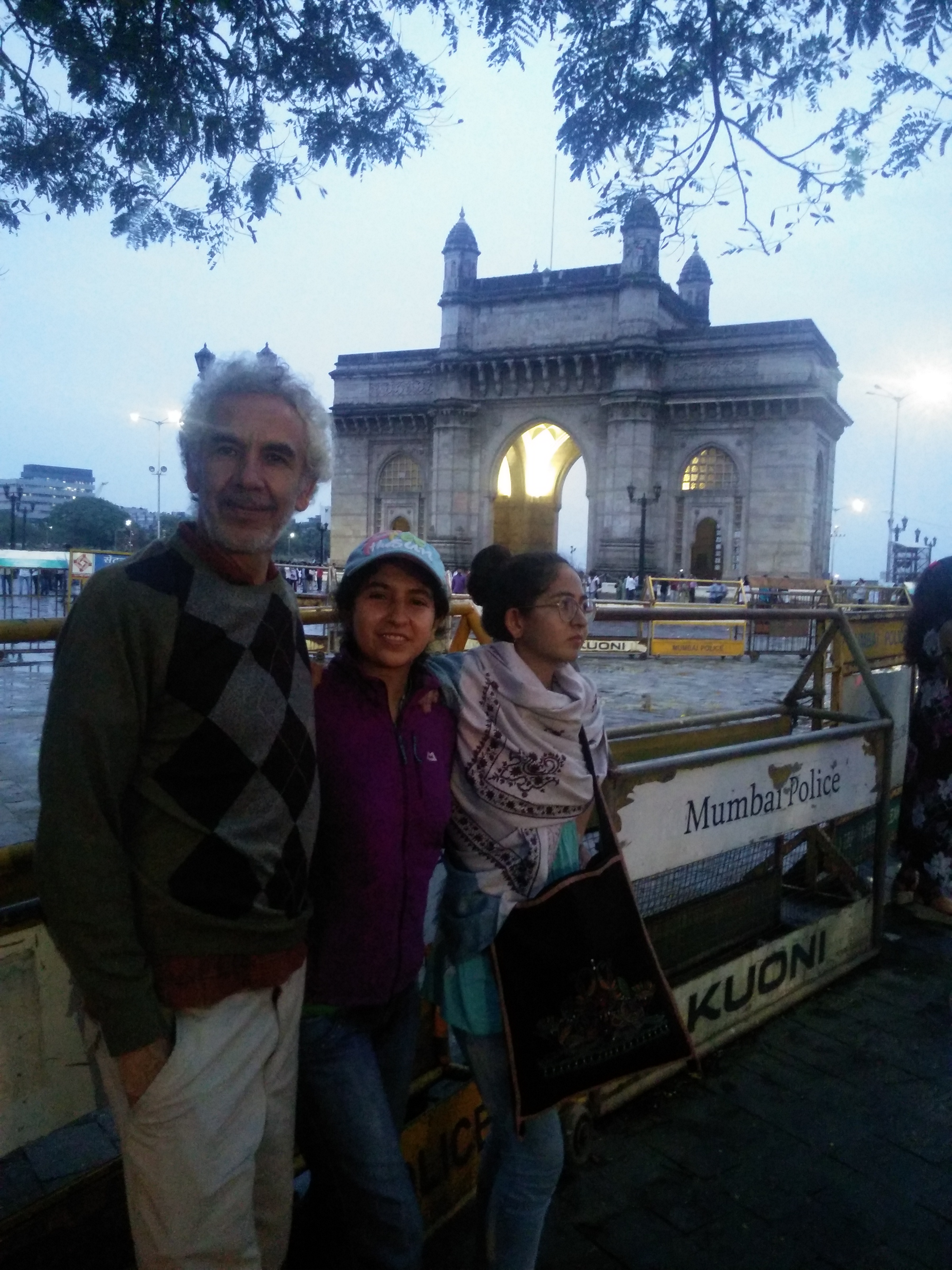http://zuniv.net/symposium7
Hello from our beautiful La Paz, Bolivia 4100 to 3100m, one of the 7 marvel cities of the world.
And it continues to grow:
Always remembering our Mountain Guru Gustavo Zubieta-Castillo (Sr.).
and thanking him for his extraordinary academic legacy !!
His genes are now in a third generation, Natalia Zubieta De-Urioste who is now our brand new M.D.
and a transcendental member of our team at the High Altitude Pulmonary and Pathology Institute.
Gustavo Sr. must indeed be proud !
_______________________________________________________________
The concept about hypoxia is always negative. The problem is that it is a biased opinion. There is a constant search for the deleterious effects of hypoxia. However, several adaptation mechanisms are misinterpreted as being a negative response, when they are actually an extraordinary positive effect.
We have to remark once more: Humans live longer at high altitude !!! Please read our latest publication:
This paper is the most popular paper on the BLDE Journal in that issue:
Furthermore, It has had such a high impact, that we have even been invited to write a book on the subject.
We are changing the concept of Chronic Hypoxia, around the globe. Understand why we are invited to give talks in many outstanding places:
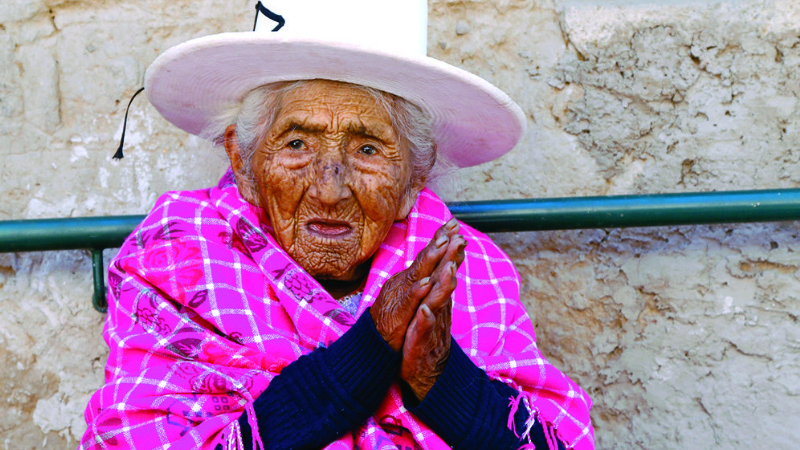 She was born on Oct 28, 1900 in San Pedro de Buena Vista Potosi, Bolivia at 3850m of altitude. According to the US Gerontology Research group – that documents the oldest people on the planet- the bolivian Julia Flores would be the oldest woman alive since she is 6 months older than the japonesa Chiyo Miyako, born on May 2 1901. Please read the article on Newspaper Pagina 7 here. At the opening session in the ABCICON ______________________________________________
Come join us to discuss these and other Chronic Hypoxia interesting aspects.
After 6 successful Chronic Hypoxia Symposiums (5 held in Bolivia and 1 in India) we invite you to join us and participate in the forthcoming, exciting:
7th Chronic Hypoxia Symposium
February 23- March 2, 2019
Dedicated to the late extraordinary Danish Physiologist Poul-Erik Paulev Poul-Erik Paulev, Ole Siggard-Andersen and Gustavo Zubieta-Calleja at the University of Copenhagen 2005Mark your calendar! This year we will also attend the Carnaval in Oruro 3800m. We want to show you how people dance with great energy over several kilometers and some carrying heavy 20 kilogram outfits. No one worries about hypoxia. As affirmed in our publications: The best way to defeat hypoxia is a timely exposure to chronic hypoxia __________________________________________________________________
Other news
Conferences in USA, 2018
This time we were in the wonderful USA, to give talks about our scientific experience in chronic hypoxia. It was a splendid and unique experience.
We started with a talk at the National Institutes of Health in Washington. Another in Pennsylvania for the local Geriatrics Society. The next at the Center for Space and Planetary and Sciences in the University of Arkansas.
The last talk was at Tulane Medical School in New Orleans, Louisiana.
Read about it here:
http://www.altitudeclinic.com/usa-2018
______________________________________________________________
Space flight under Chronic Hypoxia. One more step in Human BioSpaceFormin.
Get a sneak pre-print preview of this paper at ResearchGate.
|
Category Archives: Uncategorized
India Chronic Hypoxia Tour – Kolar
Grand Chronic Hypoxia Tour throughout India July 2016 in the city of Kolar
In this series of consecutive blogs, you can read about this outstanding scientific tour. Each blog is dedicated to one city and one scientific concept presented in the conference “Extraordinary Adaptation to Chronic Hypoxia and Life at High Altitude”
Back to Day 1 of the India Chronic Hypoxia tour
The trip to Kolar was very pleasant as Prof. Thuppil Venkatesh and myself were picked up from Bangalore in a very nice car from the SDUAHER University.
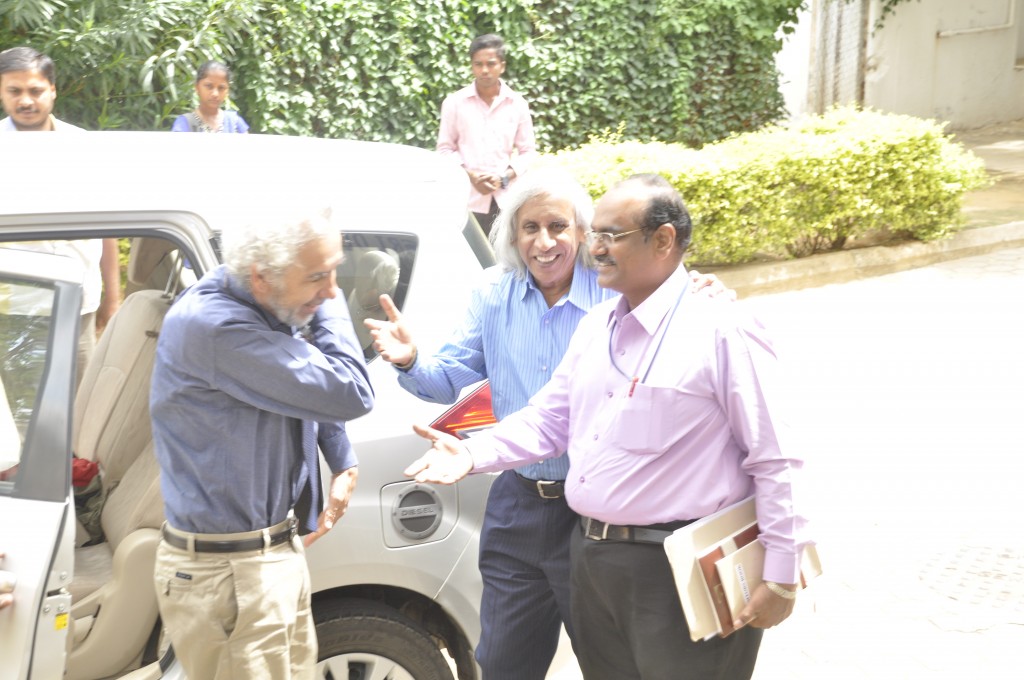
Dr. K.N. Shashidhar Professor and HOD Biochemistry, Sri Devaraj Urs Academy Of Higher Education and Research.

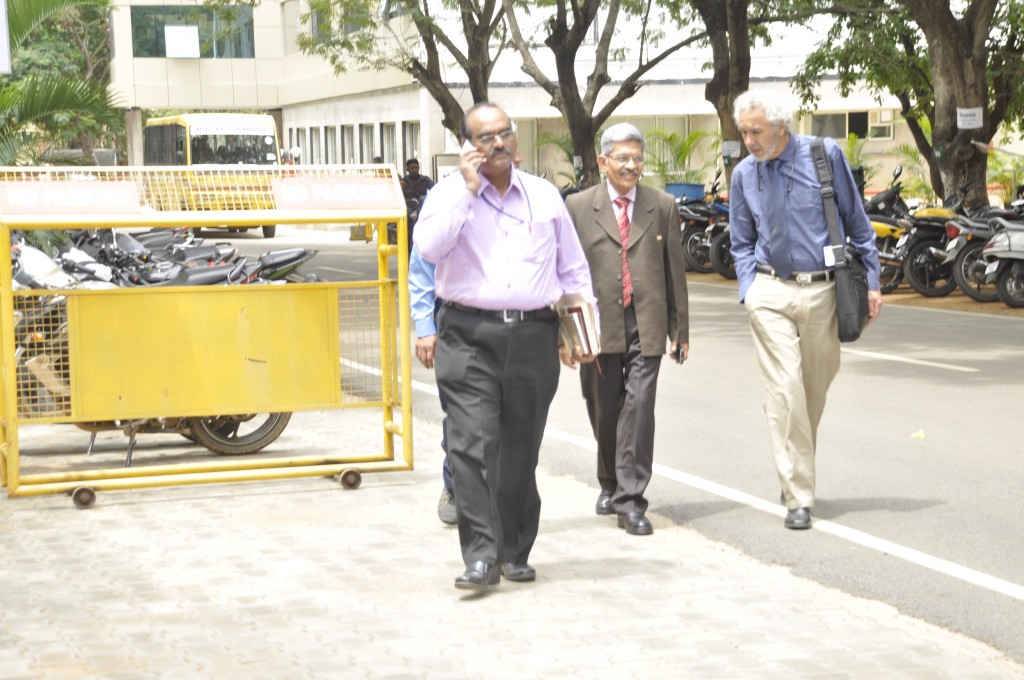
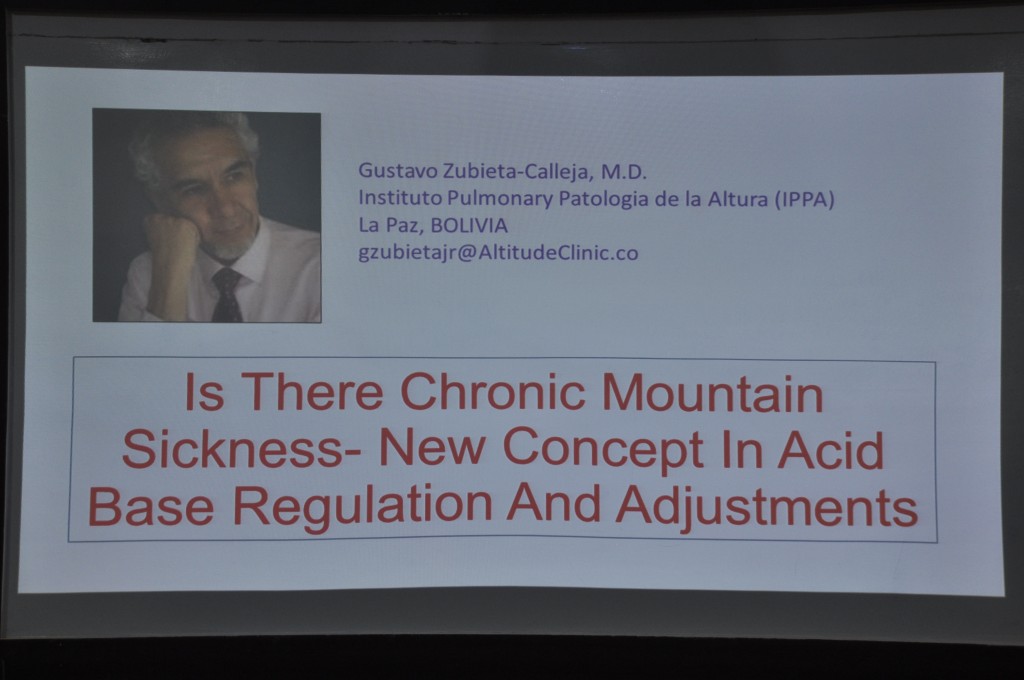
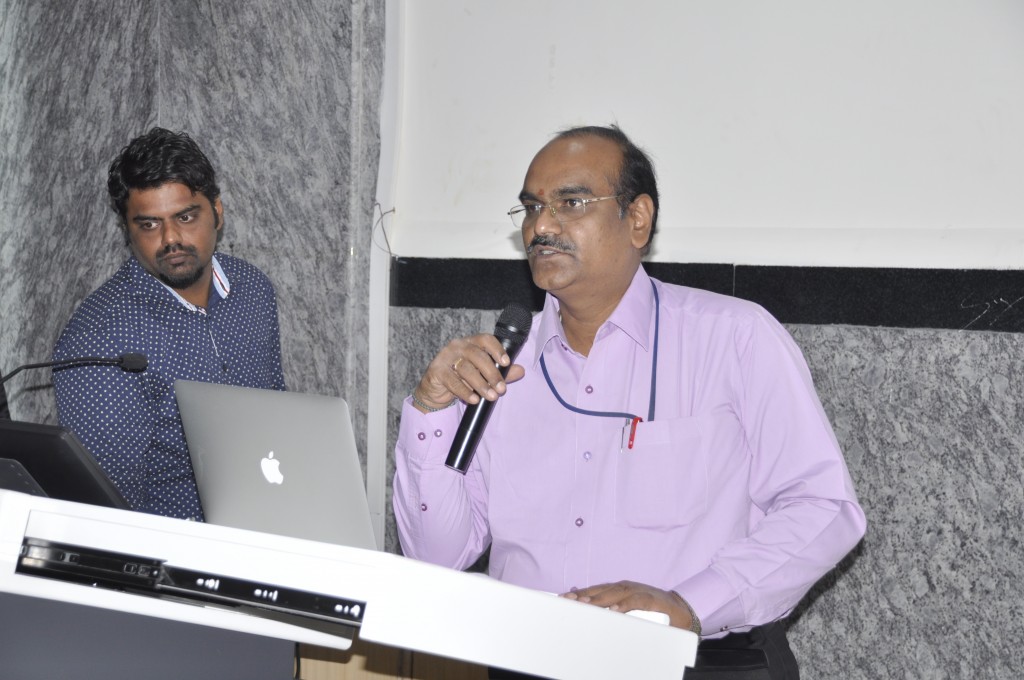


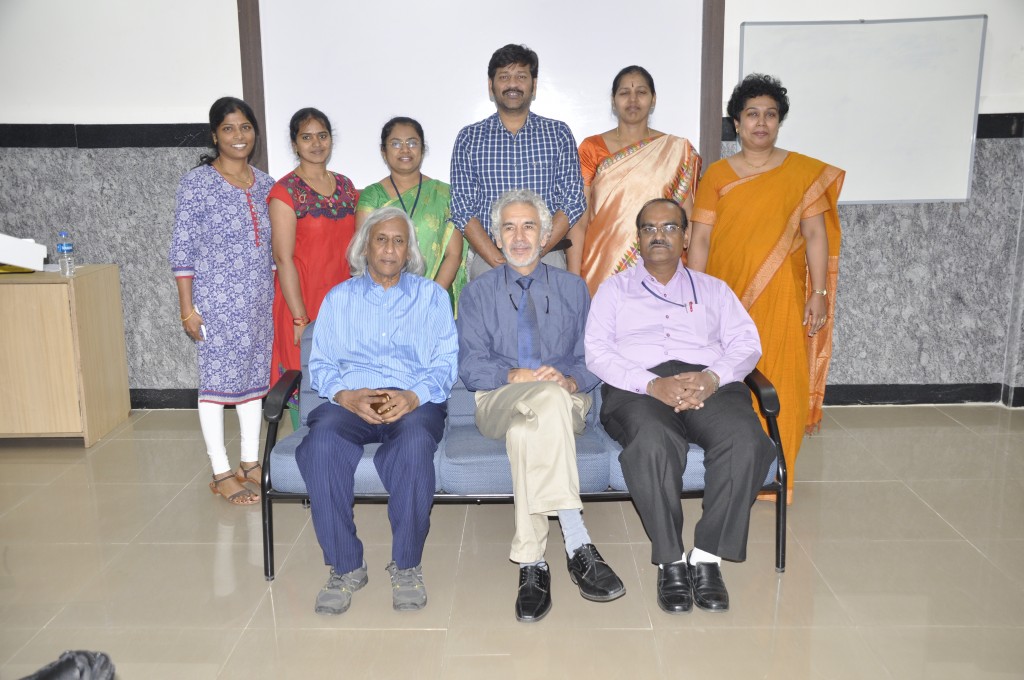

I left with a very good impression of the quality of SDUAHER University in Kolar.
Click here to go to the next day of the GRAND CHRONIC HYPOXIA TOUR IN INDIA – BELLARY.
India Grand Chronic Hypoxia Tour – Bangalore Final
Grand Chronic Hypoxia Tour throughout India July 2016 in the city of Bangalore last stop
In this series of consecutive blogs, you can read about this outstanding scientific tour. Each blog is dedicated to one city and one scientific concept presented in the conference “Extraordinary Adaptation to Chronic Hypoxia and Life at High Altitude”.
Back to Day 1 of the India Chronic Hypoxia tour

Conference at the Exclusive Century Club in Dehli kindly hosted by K.V.R. Tagore and Prof. Thuppil Venkatesh.
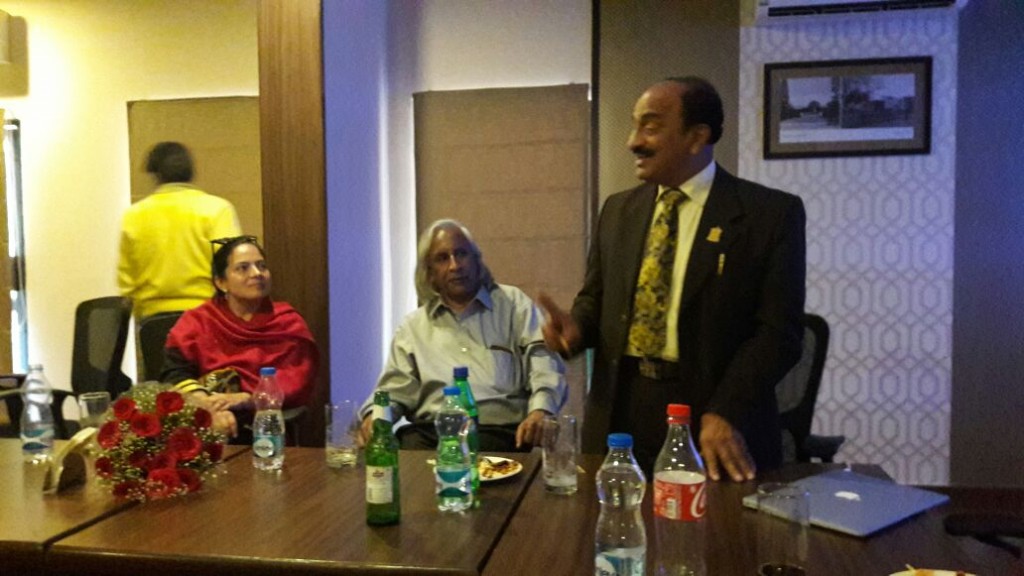
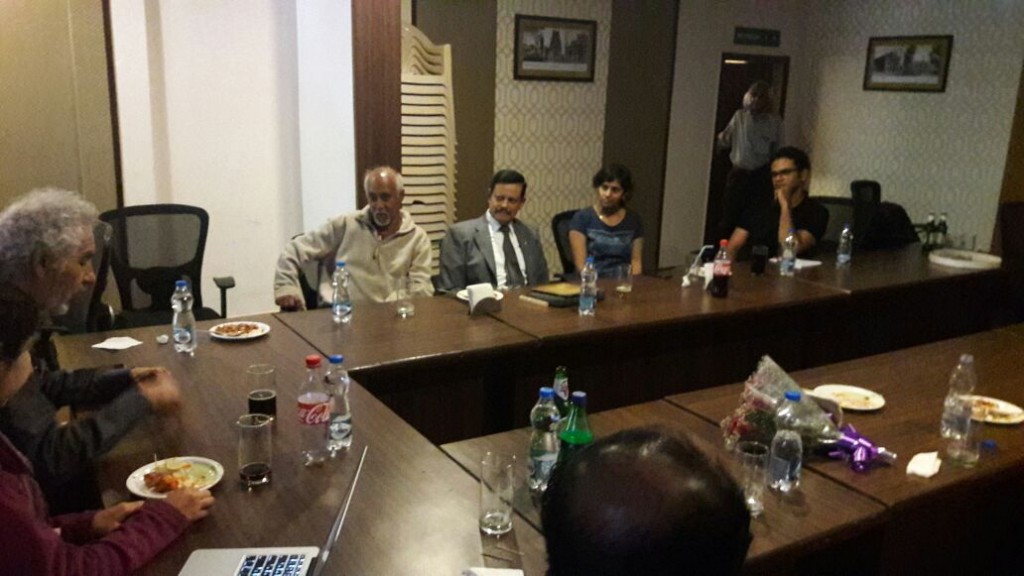
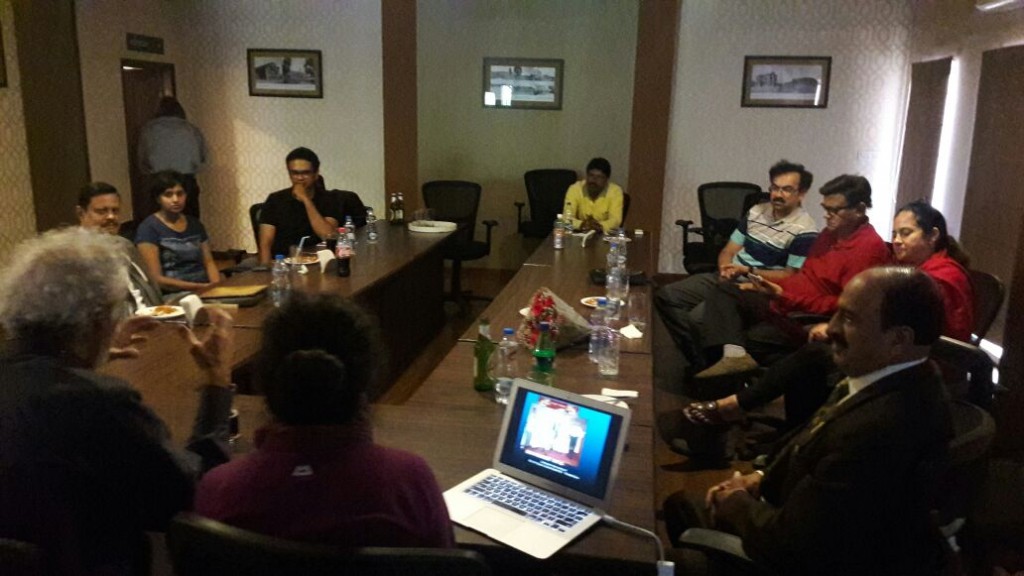

A visit to the house of K. Raghunath, where we met his beautiful family and he honored us by playing 4 pieces in violin with his son accompanying him with a harmonica. The Indian music was such a great delight that it still resonates in our minds.


The end of this fantastic scientific and cultural voyage throughout Incredible India. Thank you very much, from the deepest of our hearts, as Bolivians for all your kindness and generosity, that are a true example to the world!!
Back to Day 1 of the India Chronic Hypoxia tour
Juventud del Saracho – Poesia
Juventud del Saracho
por Gustavo Zubieta Castillo 6to curso
Juventud de gallarda figura
de talento y gran corazón,
es tu voz, voz de cultura
tus colores son de campeón.
En el rojo y negro tu llevas
entusiasmo, valor para vencer.
En el triunfo o derrotas cantas
!ADELANTE SARACHO! es deber………
Eleva tus notas al viento
que a otra era se remontará
el futuro, tu saber y talento
honor, progreso a la patria dará
1941 ——————————————1991
Placa actualmente en el lobby del Saracho en Oruro.
Reconocimiento al Dr. Zubieta-Castillo
V Chronic Hypoxia Symposium news
Dear colleagues and hypoxia friends:
We will be hosting the V Chronic Hypoxia Symposium in Bolivia this October 6-11, 2014. Several outstanding scientists from around the globe will join us to discuss tolerance to hypoxia, and other aspects of hypoxia. Among them we have Jan Marino Ramirez, Robert Naejle, Frantisek Kolar, S.V Srikrishna, Wolfgang Jelkmann, Thuppil Venkatesh, Praveen Sharma, Jain Neera, and several other outstanding scientists. The setting is an itinerant symposium where we will carry out the conferences at different altitudes. If interested, please let us know. Our philosophy is that everyone can participate openly. Some months prior to the meeting we will post some questions regarding our themes at ResearchGate.net in order to carry out and develop a virtual discussion that will end at the meeting itself. All participants will be invited to post questions here (if they wish), prior to their presentation here in La Paz. This will certainly focus all of us on our subjects of interest in a dynamic way.
http://www/zuniv.net/symposium5
so, come join us!
Las Matematicas en la Estructura de la Literatura
por Gustavo Zubieta Castillo
Este articulo fué originalmente publicado en Rinconete, in extenso el 7 de marzo del 2003, pero actualmente solo se encuentra un par de paragrafos en ese website.

No parece extraño, ni sorprende, que uno intuitivamente perciba la relación que existe entre las matemáticas, la literatura y el arte. Cuando el escritor emplea el acento en una letra, está introduciendo en el lenguaje una medida de aumento de la intensidad en la forma de pronunciar una vocal; de manera que la ortografía, obedece a reglas matemáticas, de la misma manera que la teoría de la música, para la ejecución correcta de los sonidos en un instrumento musical.
Cuando el humano habla, y la emisión de los sonidos es válida para todos los seres , utiliza un instrumento musical constituido por tejidos orgánicos: la laringe. En la capacidad física de la “calidad” e intensidad del sonido, se funda la clasificación y subdivisión de la voz humana: aguda y grave. Femeninas : soprano, mezzo soprano, contralto, y en masculinas: tenor, barítono y bajo. Todos los fenómenos de naturaleza física son susceptibles de medirse y también los psíquicos. Se puede decir: que no hay fenómeno en el universo, cuyo estudio no lleve a la conclusión, de que exista una intima correlación de unos con otros de diferente naturaleza.
Siendo la literatura la expresión de un conjunto de conocimientos asociados al lenguaje, no puede excluirse de su estructura la presencia de las ciencias llamadas exactas y por lo tanto de las matemáticas. Las matemáticas y la literatura, como todo saber, están almacenadas y amalgamadas en los delicados centros nerviosos superiores, constituyéndose en una de las cualidades más grandes de la inteligencia: la memoria.
El lenguaje, expresado en palabras, no es otra cosa que una armoniosa asociación de experiencias del conocimiento, de diversa índole; que, en un momento determinado, forman una idea, un concepto que se exterioriza, como sonidos en el lenguaje hablado o mediante la escritura.
Las ideas originales, son eventos probabilísticos, del permanente ejercicio de pensar y meditar: la imaginación.
LA PROPORCION Y LA MEDIDA EN LA POESIA
La métrica en la construcción de un cuarteto en un soneto, no es otra cosa que la medida intuitiva de la utilización de un determinado número de palabras distribuidas equitativamente en grupos de sílabas. Y la consonancia, no es otra cosa que la utilización de sílabas, notas armónicas, sonidos u ondas físicas, producidas por la articulación de la palabra; agradables al oído formando una oración que tiene un significado.
El contenido del verso, parece tener en los últimos tiempos menor trascendencia que en épocas anteriores; por ese afán y la pretensión de encontrar la originalidad, y creatividad, dando más importancia a la musicalidad y abandonando el mensaje, Así parece haber nacido la poesía modernista y surrealista; corriente que ha tenido más éxito en la pintura, suplantado la perfección del dibujo por el color.
Los cuartetos y los tercetos son medidas de palabras agrupadas, con sentido lógico, que expresan verdades o fantasías; que por contener un sentido afectivo, son capaces de despertar las más íntimas reacciones emotivas del individuo.
Quién no conoce, desde las primeras experiencias de sus incursiones por la literatura, en el colegio u otra fuente de cultura, el soneto del genial poeta español Félix Lope de Vega y Carpio (1562-1635), como ejemplo de conocimiento de la métrica, término correcto de significación matemática. Y con placer ganamos la experiencia de cómo nace un soneto en la inspiración imaginativa del autor. Y ahí viene, como recuerdo, el ejemplo:
Soneto
Un soneto me manda hacer Violante,
En mi vida me he visto en tal aprieto;
Catorce versos dicen que es un soneto:
Burla burlando van los tres delante.
Yo pense que no hallara consonante,
Y estoy a la mitad de otro cuarteto;
Mas si me veo en el primer terceto,
No hay cosa en los cuartetos que me espante.
Por el primer terceto voy entrando
Y aún parece que entré con pie derecho,
Pues fin con este verso le voy dando.
Y estoy en el segundo, y aún sospecho
Que estoy los trece versos acabando:
Contad si son catorce y está hecho.
La mente del autor realiza una operación mental de carácter matemático; la diferencia radica, en el uso de palabras en lugar de números.
El autor hace un análisis numérico de lo que es un soneto. Esto no es novedad. ¿ Qué poeta no sabe que es un terceto y un cuarteto? Pero, cuando está en el proceso de inspiración, un mecanismo automático e intuitivo le hace utilizar una medida, de la misma manera que se utiliza el conocimiento para medir la distancia, o para medir la velocidad. Mientras la práctica avanza y gana en experiencia, la medida alcanza mayor precisión, sin la necesidad de utilizar un instrumento para medir; como el metro.
El desarrollo de la oración en la poesía termina con una analogía acústica, que define la cadencia y el ritmo del verso. Un fenómeno físico acústico ha sido medido subconscientemente.
El denominativo de Soneto, viene del termino italiano“ Sonette”, que significa sonido musical, grato al oído. Y siendo todo acto de medir, un proceso mental esencialmente matemático, se ha medido el sonido del sonette o soneto.
RELACION ENTRE LA IMAGINACION Y LA MENTE ESTADISTICA DE DON MIGUEL CERVANTES SAAVEDRA.
En la obra “DON QUIJOTE DE LA MANCHA” , la vida de dos personajes transcurre con una serie de aventuras de lo más inverosímiles, en el teatro de los acontecimientos cotidianos. La personalidad y el papel de Don Quijote y Sancho Panza, constituyen el centro del universo creativo e imaginativo de Don Miguel Cervantes Saavedra. Ambos personajes aparentemente son ficticios, pero al mismo tiempo, están presentes en nuestra vida cotidiana; por lo tanto, su existencia y presencia puede ser identificada en las estadísticas de cualquier población.
Para definir la personalidad y el carácter de los protagonistas de la obra Don Quijote de la Mancha con las matemáticas; empecemos por recordar que juega un papel muy importante en el análisis de todos fenómenos de la naturaleza, la curva descrita por el genial matemático Karl Friedrich Gauss (1777-1855); curva normal o curva en campana, como también se llama. No sólo en las ciencias; si no que, en el conocimiento humano, para el análisis de cualquier fenómeno de la naturaleza, actualmente no puede prescindirse de la curva normal de Gauss.
De la manera más breve e ilustrativa, recordemos que la curva normal o de Gauss ( y= e-x2), es una gráfica en forma de campana en un sistema de coordinadas de distribución de dos variables. La distribución de la frecuencia en la ordenada y los cambios del fenómeno observado en la abscisa, que puede ser de cualquier naturaleza; por ejemplo: talla, peso, carácter, personalidad. Curva en la cual se puede estudiar estadísticamente fenómenos de diversa complejidad.
Si la curva normal de Gauss en estadística, es una herramienta que tiene aplicación en las ciencias exactas puras y aplicadas; y tiene también utilidad, en las ciencias sociales y la psicología, ¿ entonces, por que no en la literatura?. Veamos.
La descripción precisa de la personalidad, encuentra dificultades en los métodos más cuidadosos de la Psicología; si se tiene en cuenta que, la diferencia entre los caracteres de los individuos que se encuentran en el rango de la normalidad, no presenta grandes diferencias identificables. Pero, no nos sorprendente comprobar a Don Miguel de Cervantes Saavedra describiendo, de una manera intuitiva, a los dos personajes centrales de su obra, Don Quijotes y Sancho Panza, con características diametralmente opuestas.
Física y psicológicamente, fácilmente identificables, con mente estadística, Cervantes Saavedra ha puesto a estos dos personajes, en los extremos de la curva normal de Gauss, sin tener noción de la utilidad de la estadística. Gauss aún no existía, y no se conocía ésta ciencia.
Si analizamos el peso corporal de Don Quijote, por su constitución física y tal cual lo imaginamos y lo ilustran los dibujantes, pesa alrededor de los 50 kilos, en contraste con Sancho Panza que esta ubicado en los 80 o más kilos. Si psicológicamente clasificamos estadísticamente, sus caracteres y sus comportamientos veremos que se alejan a los extremos, del sujeto que consideramos “normal”.
Don Quijote por sus características psicosomáticas, está más proclive a las enfermedades vasculares, hipocondríacas y del sistema nervioso. Contemporáneamente diríamos, por ejemplo, que es más susceptible a padecer de paranoia y de la enfermedad de Azheimer. A diferencia de Sancho, cuya predisposición más se inclina por las enfermedades digestivas, vasculares y a las afecciones que van acompañadas de hipertensión arterial; hoy diríamos, producidas por el exceso de colesterol. Amen, del papel que a cada uno de ellos les ha asignado Cervantes Saavedra, en el teatro de la vida.
Mimetizados y sublimados en diversos matices de su comportamiento y accionar, pueden ser objeto de estudio de múltiples variantes. Siempre en concordancia con el papel que el autor, les hace representar en su innumerables aventuras en la Mancha, los personajes también viven, en un área que geográficamente existe.
Podemos concluir diciendo: Que la literatura y las matemáticas son conocimientos recíprocos y complementarios, y sin percatarnos los utilizamos a diario en todas nuestras expresiones.
Chronic Hypoxia Symposium IV
Dear colleagues from around the world:
After 3 successful Chronic Hypoxia Symposiums held in La Paz, Bolivia, we are very proud to announce that the IV Chronic Hypoxia Symposium will be held in India under the direction of Prof. Thuppil Venkatesh.
Please stayed tunned for the preliminaries that will soon surface.
In the meantime, we want to thank all those that participated and attended our III Chronic Hypoxia Symposium held in La Paz in Oct 2010. Our President Larry Silver was able to find support from CISCO that transmitted via Webex to all the participants live presentations from around the world.
Gustavo Zubieta-Calleja
Vice-President
International Society of Chronic Hypoxia
New Human Physiology book on-line
New Human Physiology | Paulev-Zubieta 2nd Edition
We are proud to announce the launching of a new free on-line physiology book entitled “New Human Physiology” by Prof. Dr. Poul-Erik Paulev and Prof. Dr. Gustavo Zubieta-Calleja (Jr), where there is an important contribution of Prof. Dr. Gustavo Zubieta-Castillo (Sr.) in the chapter related to high altitude, where he gives the new concepts on high altitude physiology.
In this 2nd Edition of the Textbook in Medical Physiology And Pathophysiology Essentials and clinical problems, we decided to change the name in order to show that this new version is modified in form and becomes interactive. This digital book uses a new format in order to constantly evolve and improve. Hence the term “New” never becomes outdated, as it is permanently evolving. You are welcome to send us comments or additions in each section where the link comments are posted. Please be brief and try to fit in one sentence an essential concept in physiology. Remember this is a textbook for medical students. And due to the exponential growth of information, they are overwhelmed with data. If you agree your name and/or your affiliation can be included in the comments. This allows for a dynamic physiology book that is often updated with the new exponentially growing information. A new format for future scientific books.
As a comment is posted, we review it and proceed to include it in the book, if appropiate. We have an open mind and this has always been our standing with respect to science. It should be a common good, open to all around the globe. A true globalization of knowledge. That is why the 1st edition published by the first author in 2002 has been so popular. It was the first medical physiology book to be completely free on-line.
Please note that we are not obliged to publish the comments on-line, as we will peer review them first. But you can be sure that we are not biased or just publish your contribution if you are a member of a closed group (as some journals do). Quite the contrary, we are open for any sound, solid scientific contribution from any distinguished colleague (or student) around the world. We base our focus of science on two concepts: “The joy of seeing the light” and “Science, honor and Truth“
Any suggestions as to how to improve this book are most welcome. Enjoy!
Poul-Erik Paulev & Gustavo Zubieta-Calleja
Click here to visit the NEW HUMAN PHYSIOLOGY




